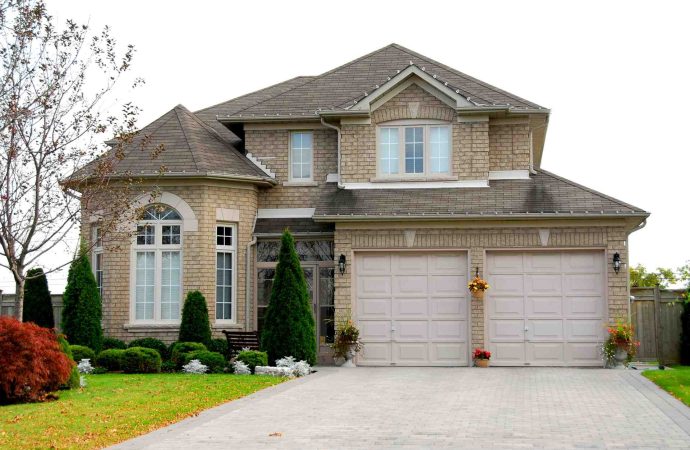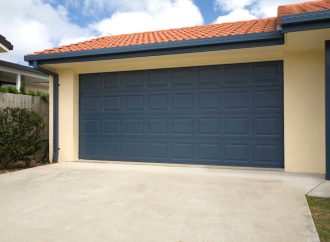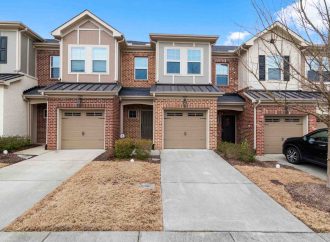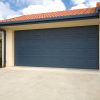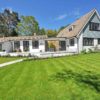Noise pollution may have a negative influence on our general well-being, producing stress, sleep disruptions, and decreased productivity. Fortunately, there are some practical techniques for reducing noise pollution in our homes. In this post, we will look at five practical ways for making your home more tranquil and quiet. One of the solutions we shall
Noise pollution may have a negative influence on our general well-being, producing stress, sleep disruptions, and decreased productivity. Fortunately, there are some practical techniques for reducing noise pollution in our homes. In this post, we will look at five practical ways for making your home more tranquil and quiet. One of the solutions we shall investigate is the replacement of windows and doors, which may play an important role in noise pollution reduction. By applying these suggestions, you will be able to create a tranquil environment that encourages relaxation and improves our quality of life.
Seal Gaps and Cracks
Identifying the spots where sound may enter our houses is the first step in reducing noise pollution through gap sealing. Windows, doors, walls, and flooring are common causes. Due to natural wear and tear or faulty installation, these locations frequently develop gaps and fractures over time. Noise may easily enter through windows and doors. Weatherstripping, which includes attaching materials like rubber, foam, or felt to the edges of windows and doors, is an efficient method for closing these gaps. When closed, it forms a tight seal, preventing noise from entering via gaps. Weatherstripping materials are widely available and reasonably simple to install at hardware stores. Noise can pass through cracks in walls and floors from outside or nearby rooms. Caulking and sealants are excellent for sealing these crevices and efficiently preventing noise transmission. Caulking compounds based on silicone or acrylic provide flexibility and resilience, enabling a long-lasting seal. Inspecting your property for cracks on a regular basis and swiftly sealing them may make a substantial impact in noise reduction. Aside from closing gaps and cracks, effective insulation may contribute to a more peaceful living environment. To absorb and reduce sound waves, insulating materials such as mineral wool or acoustic foam can be employed throughout walls, floors, and ceilings. Not only can you minimise noise pollution by enhancing insulation, but you can also improve energy efficiency and maintain a suitable internal temperature. Noise may readily permeate via intersections of different construction materials, such as window frames and door thresholds. It is critical to pay extra attention to these locations throughout the sealing procedure for efficient noise reduction. To prevent sound leakage, ensure that the seals and weatherstripping materials are correctly placed and form a tight barrier.
Heavy Curtains and Window Treatments
One of the key benefits of adding thick drapes or window coverings is that they improve sound insulation. These specialised materials, which are often composed of thick, noise-absorbing textiles, are intended to block and absorb sound waves, preventing them from entering our living areas. Heavy drapes and window coverings may greatly lower the intensity of external noise by acting as a barrier, resulting in a more quiet and peaceful internal atmosphere. Heavy curtains and window coverings provide a practical, adaptable, and handy option. They are simple to install and modify to personal tastes and unique noise reduction requirements. Whether it’s a curtain rod with heavy drapes or noise-absorbing fabric shades, these alternatives provide a varied method to reduce noise pollution. They may also be opened and closed at will, allowing homeowners to regulate the quantity of light and sound that enters the room at any one time. Installing thick drapes or window coverings is a cost-effective alternative to other soundproofing alternatives such as replacing windows or costly renovations. It is a realistic option for individuals who want to minimise noise pollution without spending a lot of money. Homeowners may easily enhance their living environment without breaking the bank by picking noise-absorbing textiles and materials that are within their budget. Heavy drapes and window coverings may improve a room’s visual appeal in addition to minimising noise. These embellishments, which come in a variety of colours, patterns, and designs, may compliment the overall interior décor, bringing a sense of elegance and flair to the living area. This dual capability enables homeowners to accomplish both noise reduction and visual improvement at the same time, resulting in a harmonious and pleasant environment. Keeping heavy curtains or window coverings in good condition is a simple job. They may be vacuumed or spot cleaned on a regular basis to eliminate dust and dirt. Furthermore, most curtains and treatments are machine washable or dry cleanable, making it simple to keep them in good shape. Homeowners may extend the life and efficiency of these noise-cancelling devices by performing routine maintenance.
Upgrade to Soundproof Windows and Doors
The improved sound insulation provided by soundproof windows and doors is one of the key reasons why upgrading to soundproof windows and doors is an excellent tip for minimising noise pollution. Traditional windows and doors are frequently not constructed to reduce noise penetration, enabling outside sounds to enter our living areas. Soundproof windows and doors, on the other hand, are particularly designed with numerous layers of glass, acoustic insulation, and airtight sealing to fight noise intrusion. Soundproof windows are usually made of double or triple-pane glass with an air or gas-filled area between the panes. Because the various layers of glass and the insulating gap function as a barrier, absorbing and stopping sound waves from entering your house, this design efficiently decreases noise transmission. The thickness and composition of the glass are carefully chosen to minimise noise while maximising natural light transmission. Aside from the glass, soundproof windows and doors include specialised acoustic insulation and weatherstripping materials. These elements work together to improve sound insulation. Acoustic insulation absorbs and dampens sound waves, whereas weatherstripping creates a tight seal around windows and doors, preventing air loss and noise penetration. Over time, standard windows and doors can acquire air gaps and loose fittings, enabling sound to pass through these spaces. By offering a perfect and tight fit, soundproof windows and doors avoid these weaknesses. The airtight seals prevent air leaks, reducing noise transmission. Furthermore, the sturdy construction of soundproof windows and doors eliminates vibrations that might increase sound, resulting in a calmer indoor atmosphere. Homeowners may significantly enhance their comfort and overall well-being by upgrading to soundproof windows and doors. Reduced noise pollution provides for enhanced focus, better sleep quality, and more relaxation at home. With outside noises muffled, inhabitants may enjoy a more calm and serene atmosphere, encouraging a stronger feeling of tranquillity and improved quality of life. Soundproof windows and doors can provide other benefits in addition to noise reduction. They can improve energy efficiency by reducing heat transmission, which results in lower heating and cooling expenditures. Furthermore, because soundproof windows and doors are often designed with sturdy materials that provide greater protection against attackers, these changes can improve security.
Enhance Insulation
Noise may infiltrate our houses via a variety of channels, including walls, floors, and ceilings. Inadequate insulation causes sound waves to easily permeate certain surfaces, resulting in increased noise pollution. By minimising vibrations and efficiently limiting the transfer of noise from one region to another, improved insulation serves to restrict the transmission of sound. External noise sources such as traffic, construction, and neighbourhood activities can all contribute significantly to noise pollution in our homes. Insulation functions as a barrier, keeping outside noise out of our living areas. We can establish a buffer zone that considerably minimises the influence of outside noises on our everyday lives by improving insulation, particularly in regions exposed to high levels of external noise. Noise pollution does not come only from outside sources. Footsteps, conversations, and appliances in our houses may all contribute to a loud living environment. Insulation aids in the containment and reduction of sound wave transmission across rooms. We may efficiently minimise the transmission of internal noise by improving insulation inside walls, floors, and ceilings, resulting in quieter and more tranquil living areas throughout our houses. Sound-absorbing insulation materials can enhance the acoustic performance of our dwellings. These materials absorb and attenuate sound waves, which helps to reduce echoes and reverberations within spaces. We may obtain better sound management and a more acoustically pleasing atmosphere by improving insulation in places prone to echo, such as big open spaces or rooms with hard surfaces. Improving insulation for noise reduction has additional advantages, notably in terms of thermal insulation. Insulation materials with high sound-absorbing capabilities are frequently also good heat insulators. Homeowners may design an energy-efficient house that maintains a pleasant temperature while decreasing noise pollution by upgrading insulation.
Sound-Absorbing Materials
Carpets, area rugs, upholstered furniture, and drapes, for example, have an important role in lowering noise pollution by reducing sound reflection. Hard surfaces like bare walls and floors reflect sound waves, causing them to bounce around and intensify inside a room. These surfaces may efficiently absorb and disperse sound energy by combining sound-absorbing materials, minimising excessive reverberation and producing a more calm living atmosphere. Echoes and reverberations are common in spaces with high ceilings or limited furniture, contributing to a loud atmosphere. Sound-absorbing materials aid in addressing this issue by absorbing sound waves, eliminating echoes and minimising sound prolongation. The use of materials such as acoustic foam panels on walls or noise-absorbing fabric hanging curtains may considerably reduce the impact of reverberations, resulting in a calmer and more comfortable living area. In households where numerous activities take place at the same time or when family members converse, effective and understandable communication is crucial. Sound-absorbing materials increase speech intelligibility by lowering background noise and increasing voice clarity. Conversations become more natural with less sound interference and better acoustics, improving overall communication and generating a more serene environment within the house. The adaptability and customisation choices of sound-absorbing materials are one of its practical advantages. These materials are available in a variety of styles, colours, and textures, allowing homeowners to easily blend them into their existing interior decor. Whether it’s incorporating noise-absorbing drapes to compliment a room’s aesthetics or adding area rugs to improve both sound absorption and visual appeal, these materials provide homeowners a variety of options to fit their own tastes and design sensibilities.
Reduced noise pollution in our homes is critical for our health and general quality of life. We may establish a serene and tranquil living environment by applying the five measures described in this essay, including the replacement of windows and doors. Sealing gaps, adding heavy drapes, upgrading to soundproof windows and doors, improving insulation, and introducing sound-absorbing materials may all help to limit noise intrusion and create a quiet environment that encourages relaxation and productivity. We may enjoy a peaceful house and avoid the continual noise of the outer world by adopting these actions.

